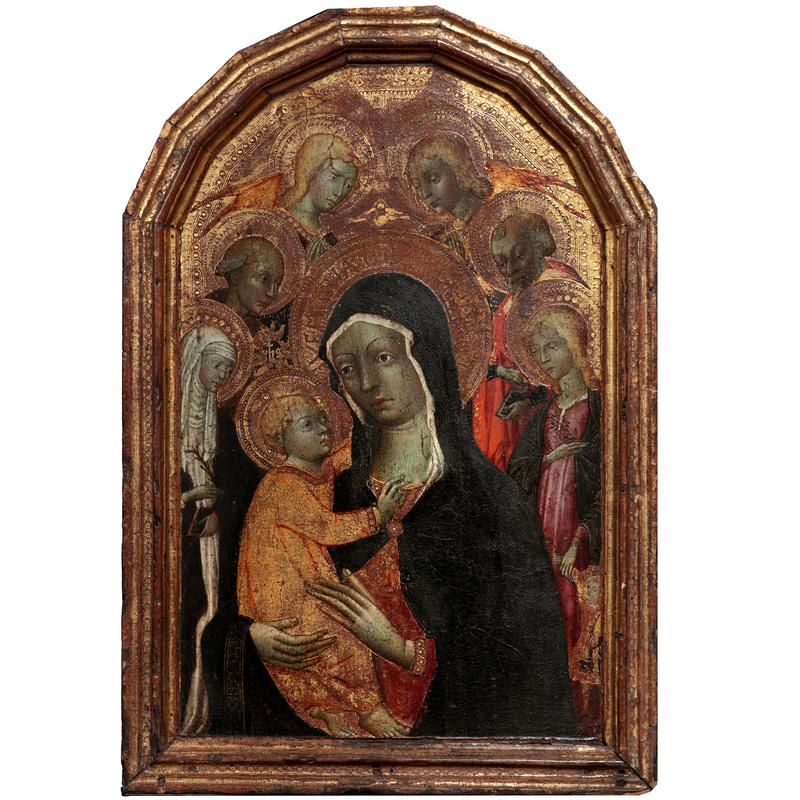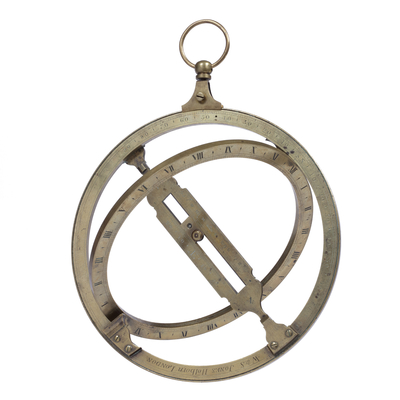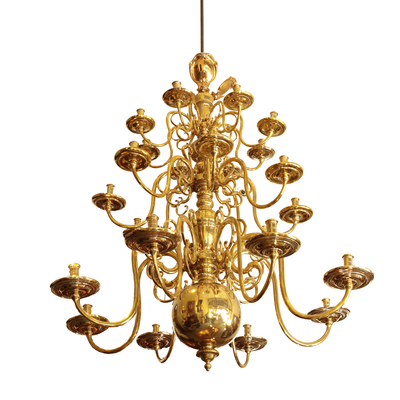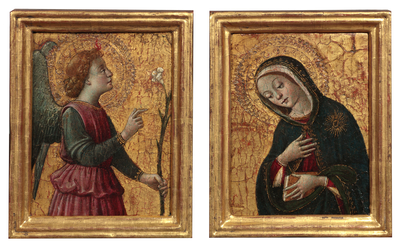Pellegrino di Mariano, 'Madonna and Child with Saints'
Global shipping available
- Maker
- Pellegrino di Mariano
- Origin
- Siena, Italy
- Period
- Active 1449 - 1492
- Material
- Tempera on panel, gold ground
- Height
- 61 cm
- Width
- 41.8 cm
- Provenance
Pandolfini, Florence, 28 October 2014, lot 15
Questions about this object?
Please use one of the contact options below:
Description
This painting of Madonna and Child with Saint, by Pellegrino di Mariano, a highly esteemed Sienese master of the Quattrocento and best know for his work as a miniaturist, shows the Madonna and Child flanked by six figures that form a celestial court around them. The two patron saints of Siena are represented on the left: Saint Catherine and Saint Bernardino, while on the right are Saint Dorothea and Saint Jerome. Representations of Saint Dorothea are rare in Sienese Quattrocento art and her presence in this painting would have had a special meaning. Saint Dorothea was the patron of various conditions, and most likely she is represented here as the personal patron of the person who commissioned the picture and who may have been a woman. It is possible that to illustrate this saint, Pellegrino di Mariano drew inspiration from the small panel of circa 1460 representing Saint Dorothea and attributed to Francesco di Giorgio, which is now in the National Gallery, London.
Following the format frequently used by Sano di Pietro, the six lateral figures are arranged to challenge the spatial dimensions of the panel by following its arched form. The polygonal form of the apex of this panel is rare in Pellegrino’s oeuvre, since he more usually used either rectangular or round arched panels. The ‘doll’ like figures recur in many miniatures by the artist. The forms are simplified and the palette is clear and varied. The features of the female figures are only slightly modelled by a light transition of chiaroscuro. Eyebrows are achieved with fine arced lines, while the lips are full of lively colour with the corner of the mouths usually turned down. The elongated hands are wilfully left unarticulated, as indeed are those of the lateral figures, which reveal the typical characteristics of the painter’s work. The present panel belongs to a relatively precocious moment in Pellegrino’s career; in imitation of earlier works of Sienese painting, the fine cloths of the figure’s robes are worked in sgrafitto, achieved by applying fine parallel incised lines in the paint surface that has been added over gold leaf.
Pellegrino di Mariano worked for Pope Pius II Piccolomini (1405-1464), as well as important institutions in Siena such as the Opera del Duomo and the Spedale di Santa Maria della Scala. He probably received formative training with Giovanni di Paolo (1398–1482) and subsequently he entered the circle of Sano di Pietro (1405–1481), the most popular artist in Siena at the century’s mid-point. By following the latter’s studio practice and emulating his famous compositions, Pellegrino gained distinction as a specialist in devotional painting. Sano di Pietro had established a new type of image for Marian devotion in Siena, in which the Madonna and Child are represented in half or three-quarter figure, flanked by saints and angels arranged symmetrically, and silhouetted against a tooled gold ground. Usually, the iconography of these paintings was personalised through the selection of the saints by the patron and the works were conserved in private houses or in the cells of members of religious orders. Di Mariano adhered to this compositional formula invented by Sano di Pietro, but also sought to distinguish his paintings through a personal style. He frequently turned to traditional images as models (especially works by Simone Martini, Lippo Memmi, Andrea di Bartolo and Jacopo della Quercia), but he created his own compositional solutions, which while reusing the same primary cartoon, show significant variations in many examples.





